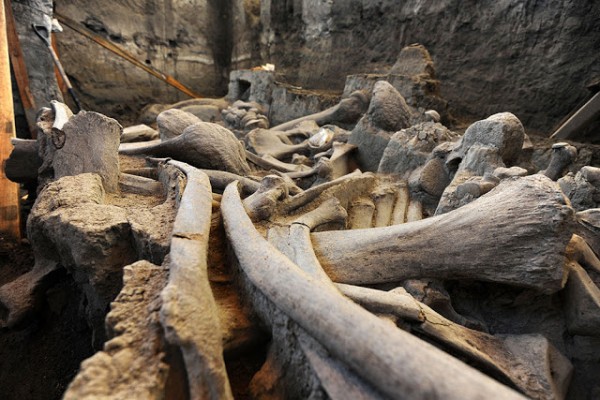The remains of an ancient mammoth that lived during the Pleistocene era was recovered during drainage installation at the Tultepec village in Mexico and now, researchers are already completing this excavation of the fossilized mammoth bones that are estimated to be 14,000 years old.
Scientists reveal that these ancient remains were found scattered about the region, where they suggest that prehistoric humans apparently slaughtered the beast and butchered it for meat and pelts. Researchers also say that evidence shows how the mammoth was positioned in such a way that it struggled getting out of the mud. Some of its remains were also discovered near a shallow lake where other mammoths also became stuck in the mud.
According to archaeologist Luis Cordoba from the Mexico's National Institute of Anthropology and History, these remains belong to more than 50 mammoths that have been uncovered around Mexico City. This new discovery in Tultepec however was buried about two meters under a street.
This Tultepec specimen is aged around 20 to 25 years old where its skeletal remains were almost intact upon discovery. Scientists reveal that this colossal creature measured 3.5 meters in height and five meters long, possessing a weight of five tons. What's remarkable is that its tusks are still attached to its skull fossil during the dig. Archaeologists also plan to exhibit this rare finding after it has been examined and analyzed.
These mammoths are also known as Columbian Mammoths that are a subspecies that thrived in Central America and the United States as remains were mostly found in Mexico, Texas including the famous La Brea Tar Pits in California.
To date, the excavation will soon be complete in the upcoming days as the mammoth remains were discovered last December 2015. Paleontologists have already successfully uncovered and transferred the pelvis and cranium where they are also in pristine conditions.


